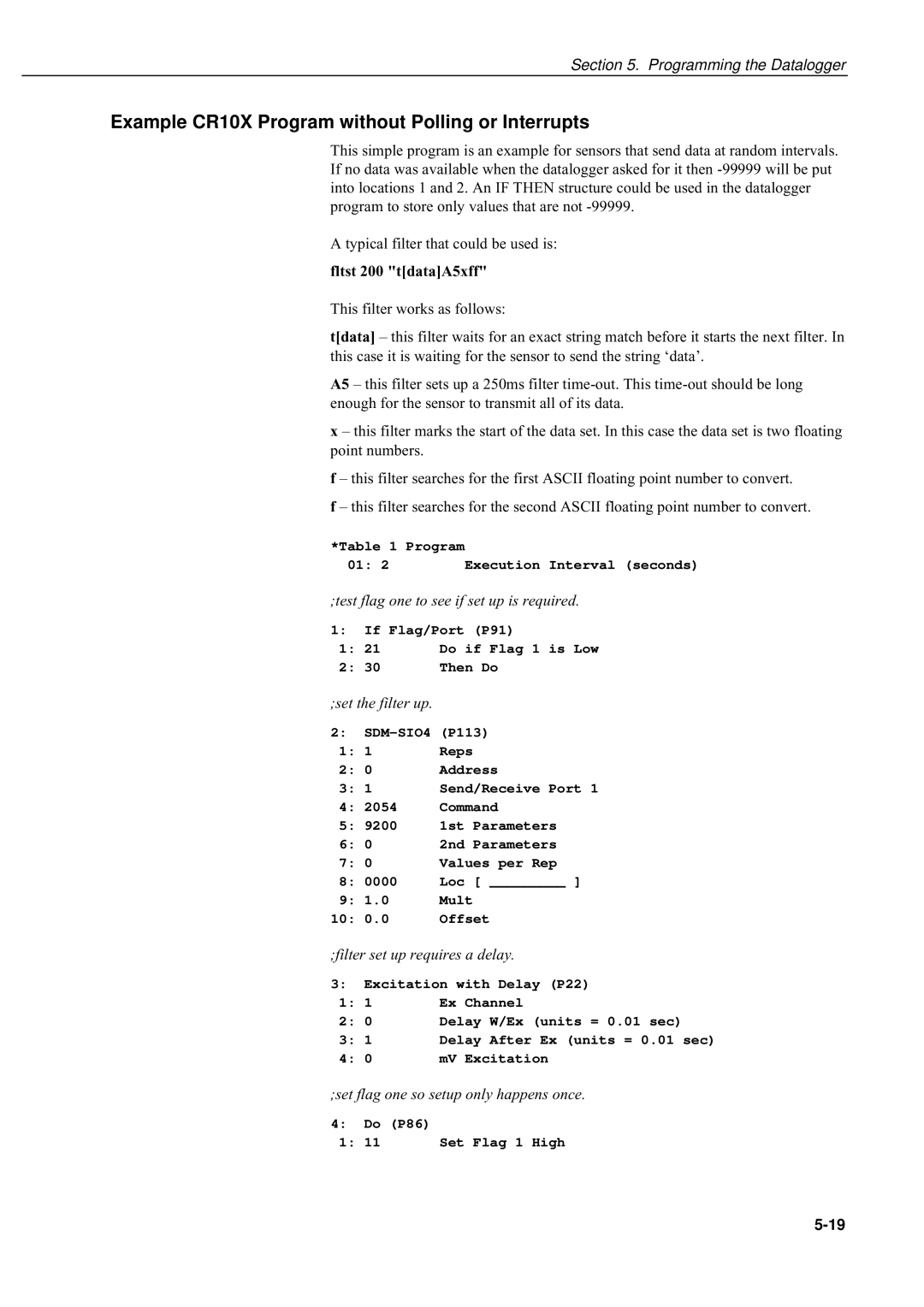Section 5. Programming the Datalogger
Example CR10X Program without Polling or Interrupts
This simple program is an example for sensors that send data at random intervals. If no data was available when the datalogger asked for it then
A typical filter that could be used is:
fltst 200 "t[data]A5xff"
This filter works as follows:
t[data] – this filter waits for an exact string match before it starts the next filter. In this case it is waiting for the sensor to send the string ‘data’.
A5 – this filter sets up a 250ms filter
x – this filter marks the start of the data set. In this case the data set is two floating point numbers.
f – this filter searches for the first ASCII floating point number to convert.
f – this filter searches for the second ASCII floating point number to convert.
*Table 1 Program
01: 2 Execution Interval (seconds)
;test flag one to see if set up is required.
1:If Flag/Port (P91)
1:21 Do if Flag 1 is Low
2: 30 | Then Do |
;set the filter up.
2:
1: 1 | Reps |
2: 0 | Address |
3: 1 | Send/Receive Port 1 |
4: 2054 | Command |
5: 9200 | 1st Parameters |
6: 0 | 2nd Parameters |
7: 0 | Values per Rep |
8:0000 Loc [ _________ ]
9:1.0 Mult
10:0.0 Offset
;filter set up requires a delay.
3:Excitation with Delay (P22)
1:1 Ex Channel
2:0 Delay W/Ex (units = 0.01 sec)
3:1 Delay After Ex (units = 0.01 sec)
4:0 mV Excitation
;set flag one so setup only happens once.
4:Do (P86)
1:11 Set Flag 1 High
